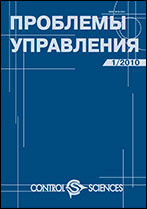|
Administration of engineering systems and technological processes
Assessing the effectiveness of intellectual technologies for identifying hazardous combinations of events in civil aviation flight safety management
E. V. Varyukhinaa, V. V. Klochkovab
a National Research Center Zhukovsky Institute, Zhukovsky, Russia
b Trapeznikov Institute of Control Sciences, Russian Academy of Sciences, Moscow, Russia
Abstract:
This paper proposes an approach to assessing the effectiveness of intellectual technologies (artificial intelligence and machine learning) for identifying hazardous combinations of events in air transport systems. The influence of such technologies on flight safety and the aircraft's total cost of ownership is formalized. A simple model is developed to assess the effectiveness of implementing intellectual technologies when identifying a single hidden problem. This model is qualitatively analyzed to reveal the role of its parameters (the size and flight hours of the aircraft fleet, the duration and cost of systemic problem elimination, and damage from events of different severity). In addition, we model the identification and elimination of hazardous combinations of events during the life cycle of air transport systems considering the learning effect. According to this effect, the intensity of hidden systemic problems decreases over time with the accumulation of experience in the operation of an air transport system and the gradual elimination of such problems. The relative acceleration in the identification of hidden patterns is the main indicator that characterizes intellectual technologies for identifying such patterns in incidents. Both types of models can be used to estimate the dependence of expected losses on this indicator. It is also important to consider the dependences of model calculation results on other parameters of the models, including the duration and cost of eliminating the identified problems, damage from various events, and the size and flight hours of the aircraft fleet. As is demonstrated below, intellectual technologies are most effective in an air transport system with a small aircraft fleet and a low intensity of aircraft operation.
Keywords:
flight safety, hidden hazards, intellectual technologies.
Received: 18.09.2023
Revised: 07.12.2023
Accepted: 24.01.2024
Citation:
E. V. Varyukhina, V. V. Klochkov, “Assessing the effectiveness of intellectual technologies for identifying hazardous combinations of events in civil aviation flight safety management”, Probl. Upr., 2024, no. 2, 74–82; Control Sciences, 2024, no. 2, 59–65
Linking options:
https://www.mathnet.ru/eng/pu1352 https://www.mathnet.ru/eng/pu/v2/p74
|

| Statistics & downloads: |
| Abstract page: | 7 | | Russian version PDF: | 1 | | English version PDF: | 2 | | References: | 2 |
|




 Contact us:
Contact us: Terms of Use
Terms of Use
 Registration to the website
Registration to the website Logotypes
Logotypes








 Citation in format
Citation in format 